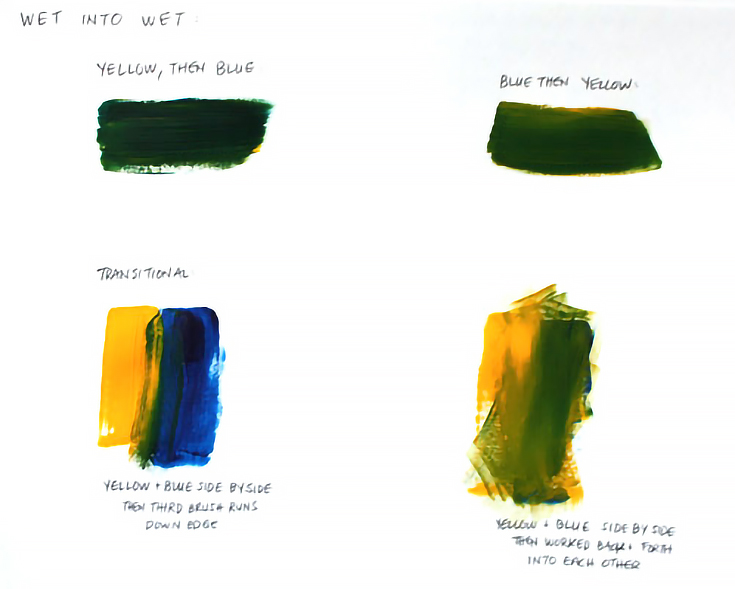In today’s article I want to explore four different color-mixing techniques that can be used with acrylic paints. To keep it simple, we will ONLY be mixing green. However, the same techniques can be used for any color.
As you’ll see, there are many possible greens in our world, all with different textures, intensities, temperatures, variations, etc. Choosing how to get “green” or any other hue is one of the things that defines your style.
Here are the four methods for mixing acrylic paint:
1. Mixing on the palette
The most obvious method for mixing paint is directly on the palette. You can mix your yellow and blue until you get the color you want, and then apply that to your support. This gives a wide range of values and temperatures:
Above, you can see a few standard greens, which just lean towards blue or yellow. Below, there are a few more extreme greens.
The beauty of mixing on the palette is that nearly any variation is possible.
2. Glazing/scumbling
With glazing or scumbling you might start with yellow, then apply a thin glaze of blue over the top. Or you can start with blue and paint yellow over the top.
This technique doesn’t lend itself to the smooth, consistent green that mixing on the palette first does, but it can lead to beautiful subtle changes. Take a look at the following examples for some ideas:
3. Optical mixing
A third option is optical mixing, where you apply the paint in separate strokes and the eye perceives it as green.
Below are some examples: on the left, I used both hands and applied the blue and yellow paint at the same time. On the right, I applied one color first, then the other.
4. Mixing on the support (wet-into-wet)
Wet-into-wet is essentially the technique of mixing a color directly on the support. This can be tricky with acrylics since they dry fast, but there are ways around that (see my previous article on keeping acrylic paints wet).
I hope it’s clear that there are many variations in how you can mix paint. There are no “right” or “wrong” methods—instead, there is only a world to be explored.
This post may contain affiliate links.





